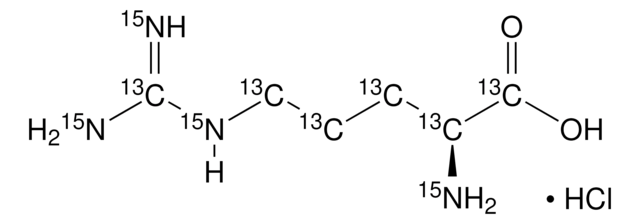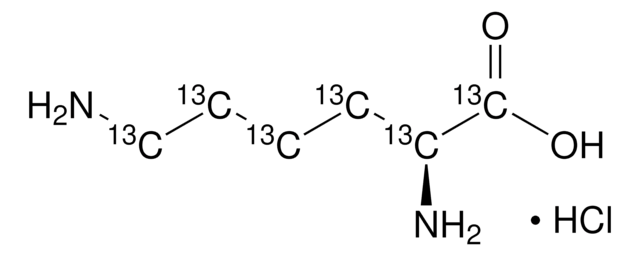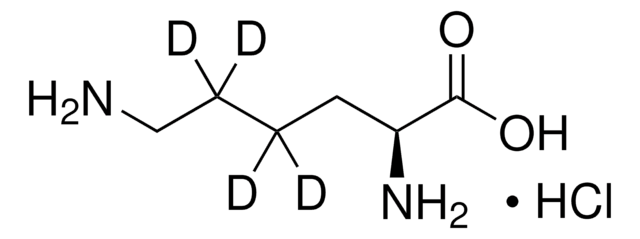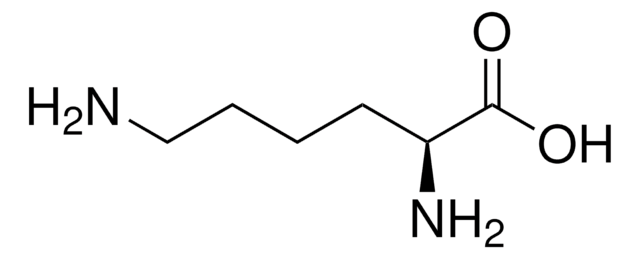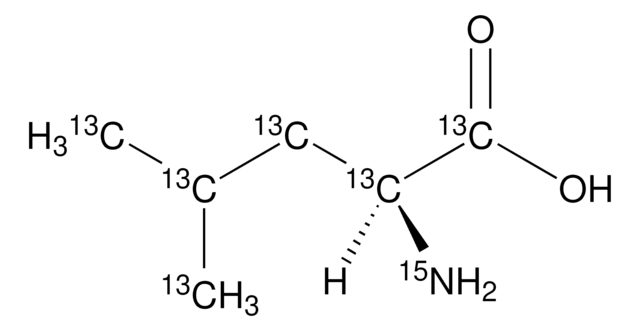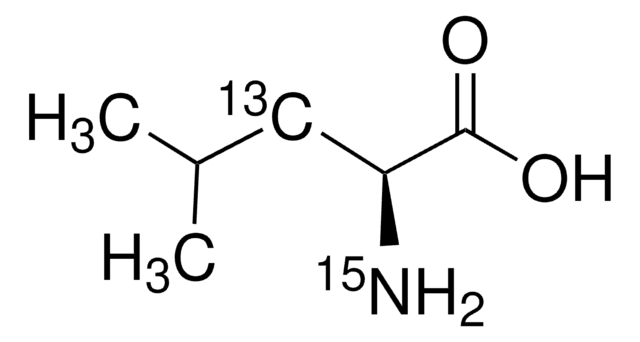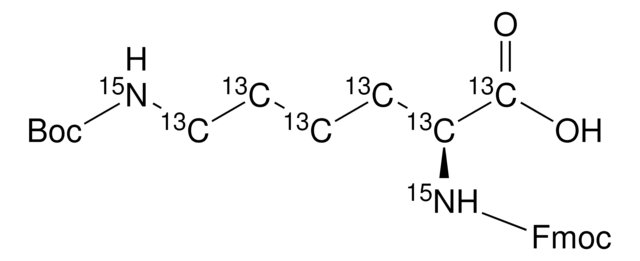608041
L-Lysine-13C6,15N2 hydrochloride
99 atom % 13C, 99 atom % 15N, 95% (CP)
Synonyme(s) :
SILAC Amino Acid, (S)-2,6-Diaminohexanoic acid-13C6,15N2 hydrochloride, 13C and 15N Labeled Lys, 13C and 15N Labeled lysine hydrochloride
About This Item
Produits recommandés
Pureté isotopique
99 atom % 13C
99 atom % 15N
Niveau de qualité
Essai
95% (CP)
Forme
solid
Activité optique
[α]25/D +20.7°, c = 2 in 5 M HCl
Technique(s)
bio NMR: suitable
protein expression: suitable
Pf
263-264 °C (dec.) (lit.)
Changement de masse
M+8
Température de stockage
room temp
Chaîne SMILES
Cl.[15NH2][13CH2][13CH2][13CH2][13CH2][13C@H]([15NH2])[13C](O)=O
InChI
1S/C6H14N2O2.ClH/c7-4-2-1-3-5(8)6(9)10;/h5H,1-4,7-8H2,(H,9,10);1H/t5-;/m0./s1/i1+1,2+1,3+1,4+1,5+1,6+1,7+1,8+1;
Clé InChI
BVHLGVCQOALMSV-GSMNGUNQSA-N
Catégories apparentées
Description générale
Application
- L-Lysine-13C6,15N2 hydrochloride has been used in pSILAC (pulsed stable isotope labeling by amino acids in cell culture) mass spectrometry to study protein profile in cells transfected with microRNAs.
- It has been used in SILAC isotopic labeling for the characterization of lysine racemase.
- It has been used in SILAC labeling for phosphoproteomic measurements in neuro-2a cells treated with and without GFKP-19 (2-pyrrolidone derivative).
Conditionnement
Produit(s) apparenté(s)
Code de la classe de stockage
11 - Combustible Solids
Classe de danger pour l'eau (WGK)
WGK 3
Point d'éclair (°F)
Not applicable
Point d'éclair (°C)
Not applicable
Faites votre choix parmi les versions les plus récentes :
Déjà en possession de ce produit ?
Retrouvez la documentation relative aux produits que vous avez récemment achetés dans la Bibliothèque de documents.
Les clients ont également consulté
Contenu apparenté
Protein structure analysis aids in identifying disease biomarkers and drug targets crucial for therapeutic treatments.
Notre équipe de scientifiques dispose d'une expérience dans tous les secteurs de la recherche, notamment en sciences de la vie, science des matériaux, synthèse chimique, chromatographie, analyse et dans de nombreux autres domaines..
Contacter notre Service technique